I don’t think Peru is as romanticised as its other South American counterparts. The glamorous beaches of Brazil and the world-renowned vineyards of Argentina tend to take centre stage. But nestled amongst these more popular destinations is a country bursting with culture, history and natural wonders. From the ancient ruins of Machu Picchu and the shimmering waters of Lake Titicaca to the colonial city of Cusco and the sandy dunes of Huacachina; Peru’s landscapes are one of the most diverse and impressive I’ve ever seen. So, this is my ultimate 2-week Peru itinerary that will help you cover these landscapes in a short amount of time.

And let’s not forget about the food in Peru. I didn’t know what to expect but the aji de gallinha (spicy chicken), ceviche (raw fish) and cuy (guinea pig) were standouts. Wash it all down with a refreshing pisco sour, the national drink of Peru, as you soak in the vibrant energy of this incredible country.
Peru was a destination that exceeded my expectations and has comfortably marked its spot as one of the top three countries that I’ve travelled to. And I’m certain this 2-week Peru itinerary will leave you feeling the same way.
Disclaimer: This itinerary is for those who are tight on time and want to see as much as possible without compromising on experience. There will be overnight buses and full days of activities. This might not be the most relaxing way to do it but you can easily tailor this itinerary and stretch your days on a longer trip out and take it at a slower pace if time permits.
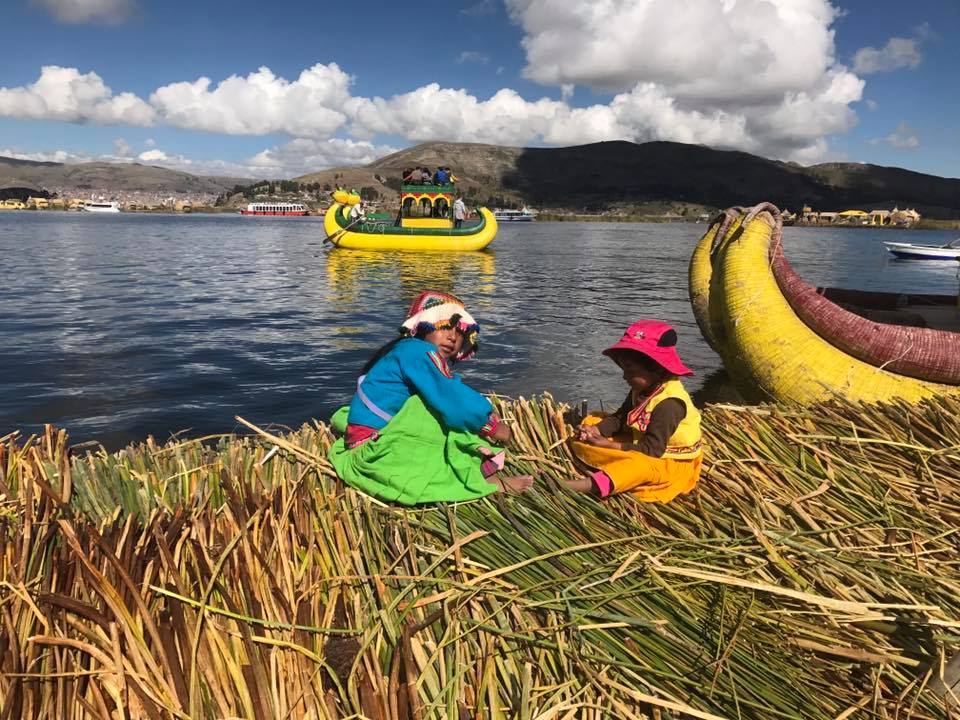
2-Week Peru Itinerary
- Cusco (2 days)
- Machu Pichhu hiking & Aguas Calientes (5 days)
- Puno & Lake Titicaca (1 day)
- Arequipa & Colca Canyon (3 days)
- Huacachina (2 days)
- Paracas/Ballestas Island (1 day)
- Lima (2 days)
Is 2 weeks enough for Peru?
2 weeks is the absolute minimum I’d recommend that allows you time to explore each region without feeling too rushed. Peru is mammoth in size, so take into consideration long journeys between cities, as well as time to get acclimatised in higher-altitude destinations like Cusco.
What is the best way to travel around Peru?
Buses! Planes can be expensive and they won’t take you directly to smaller towns. Local buses are very reasonable in cost or you can buy a bus pass that includes all the necessary stops in this itinerary. I used Peru Hop and would recommend this option for solo travellers, backpackers or anyone looking for a convenient way to get around. They are English-speaking on board and if you’re looking for accommodation as you go, they will pre-book your hostels and local excursions making it a super simple and worry-free option. It costs more than local buses but it’s worth it for the peace of mind, especially for solo female travellers.
Just get ready for some long bus journeys! Peru is huge and can take a while to get to each destination, so get your earplugs and eye masks ready… and be prepared for some overnight buses in this Peru itinerary.

What is the best month to visit Peru?
The best time to visit Peru is during the dry season between May and October. These months bring sunnier, drier days, making it ideal for trekking and enjoying all the activities Peru has to offer. Tourism peaks from June to August, so travelling in the shoulder seasons (April-May and September-November) is the best time to visit Peru, with warmer temperatures, smaller crowds, and lower prices.
The wettest months are between December and April, where you’ll likely encounter frequent showers and muddy trails. Landslides can happen and I was worried my trip in April would be cancelled due to landslides
at the time but I luckily experienced perfect weather in each region.
Top tip: If you plan to hike the Inca Trail, remember that it is closed for maintenance every February.
The Perfect 2-Week Peru Itinerary
Day 1-2: Cusco
You may be eager to start on your journey to Machu Picchu but Cusco is a charming city that you shouldn’t miss. Perched at 3,399 meters above sea level, it’s a perfect place to get acclimitised to the high altitude. This will really help you out when you begin your trekking days. Some people can experience breathlessness and heart palpitations from altitude sickness so take it easy on your first day in Cusco and drink plenty of coca tea!

Take a stroll to the Plaza de Armas, situated in the historic city centre. Both the Cathedral and Church sit amongst its edges, as well as lively restaurants and terraced bars for drinks with a view. It’s a perfect place to enjoy a coffee, pisco sour, or hearty Peruvian meal. I particularly loved sipping a passion fruit pisco sour at Calle de Medio Restaurante and Bar. Visit Sacsayhuaman (pronounced sexy woman… I’m not kidding!). Originally once a fortress, the impressive remains overlook Cusco are a marvel filled with history and a brief insight into what to expect at Machu Picchu.
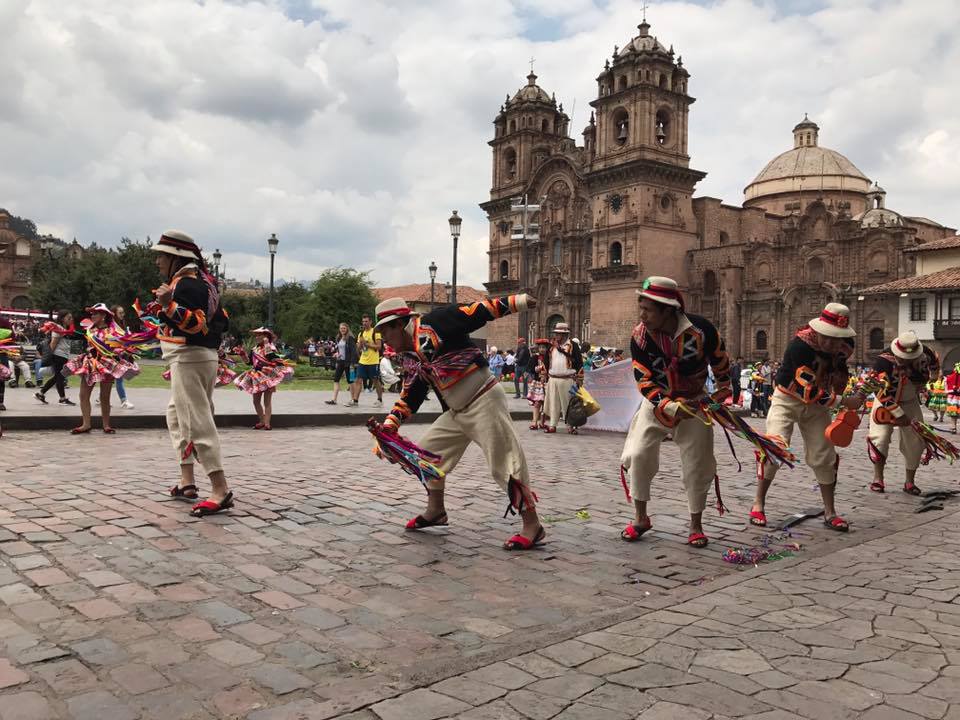
Opt to take a free walking tour (I booked one through my hostel), or check out GetMyGuide below. I love taking a walking tour in a new city! It’s such a great way to get a feel for the place and get a snippet into the history and culture. Plus, some tours offer food stops too so you can taste local snacks and delicacies.
Next up, head to San Pedro market for a mooch and bite to eat. It’s a proper local market filled with stalls offering local handicrafts like blankets and jumpers made from alpaca wool, souvenirs like keyrings and magnets, and food such as fruit juices to freshly made salchipapas (sausage and chips). If you have a sweet tooth, head to ChocoMuseo where you can not only learn about the production process of chocolate but you can get involved in chocolate making classes and other workshops.
For food, try Tunupa restaurant for dinner with a show – the lomo saltado here was delicious. If you’re feeling brave, try the local delicacy of guinea pig (cuy) at Nuna Raymi who specialise in Peruvian cuisine.
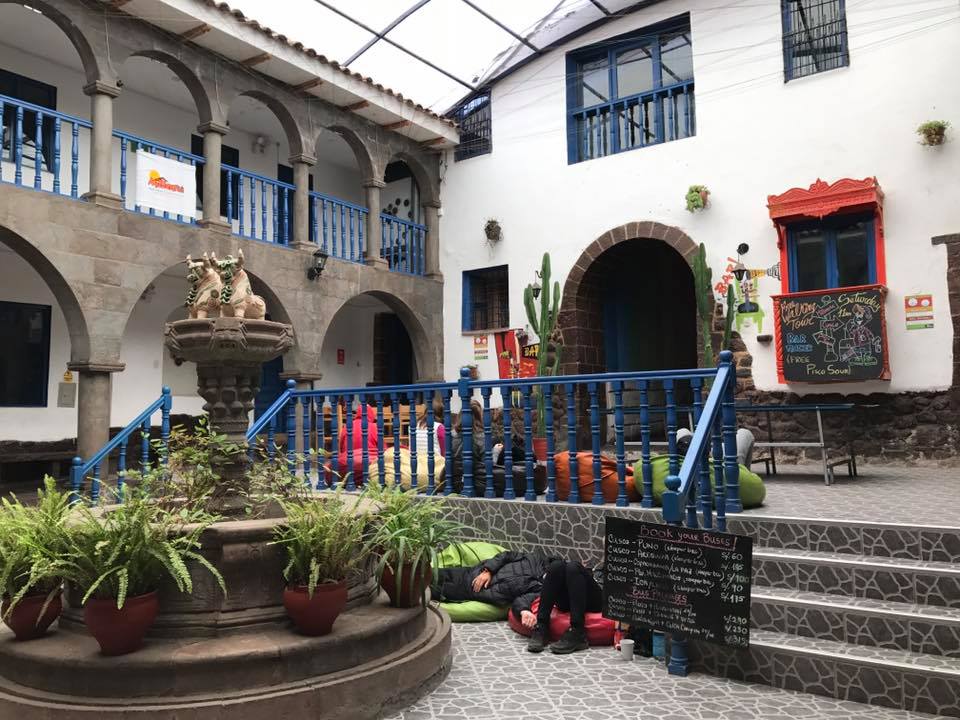
I stayed at the Milhouse Hotel, which now is known as Pariwana Hostel.
Days 3-7: Hiking & Machu Picchu
Peru is known for its iconic Inca Trail but I wrote a blog post on alternative treks to the Inca Trail because there are so many other options that offer spectacular hiking options through the Andes. Because of the fame associated with the Inca Trail, it can get really busy with up to 500 people allowed to hike it her day. The other treks allow for a much more intimate experience – we didn’t see other people on our 3 day trip.
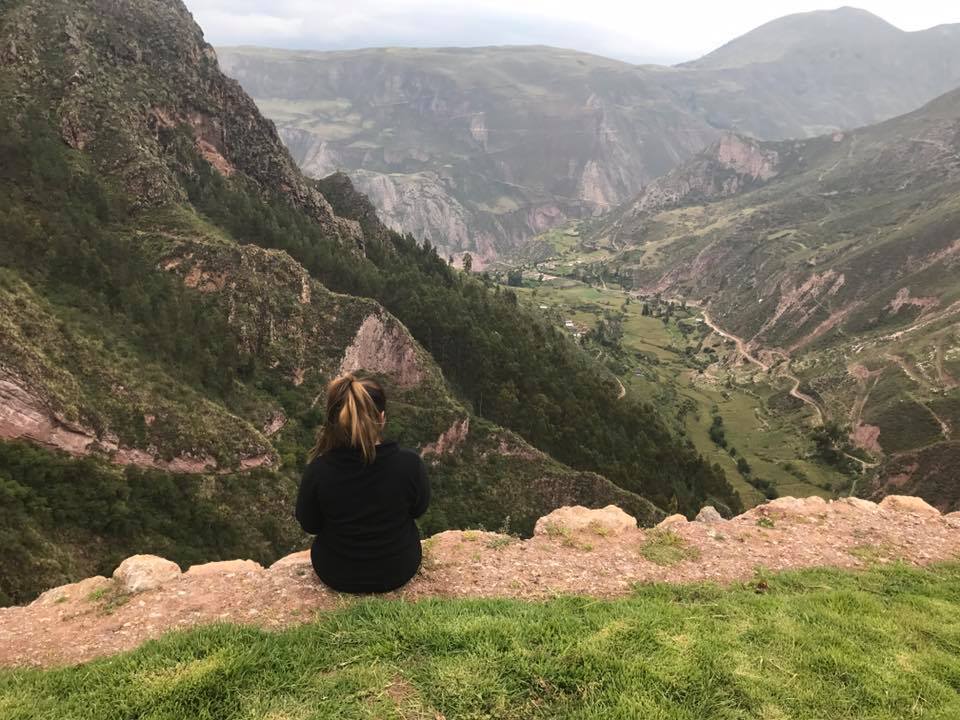
Top tip: The Inca Trail is the only hike that actually has you walk into Machu Picchu through the Sun Gate on the final day. Other hikes consist of completing your trail, ending in Aguas Calientes, and taking the train up to Machu Picchu. Remember that the Inca Trail requires a permit to hike and is closed in February due to the bad weather.
Your three or four days will be spent hiking through the Andes Mountains, witnessing spectacular scenery, discovering ancient ruins, and camping with a view. This was one of the best experiences I’ve ever had. I am not an avid hiker but accomplishing the climb and reaching an elevation of 4,450m above sea level felt incredible! The trail took us past river valleys, across stunning gorges and around charming local villages. At the end, you can spend a day recovering in Aguas Calientes, relieving your muscles in the hot springs before making your way back to Cusco where you’ll catch an overnight bus to Puno, the gateway to Lake Titicaca.

Day 8: Puno & Lake Titicaca
If you’ve taken an overnight bus with Peru Hop, you’ll arrive early in Puno. This is our gateway to Lake Titicaca and a place to meet the indigenous communities that inhabit the floating islands of Uros, crafted entirely from Totora reeds. Make sure to book onto the full day tour of Lake Titicaca with Peru Hop. You can add this in person or using their app!

The added day trip includes travel from Puno city centre to the lake, plus a boat ride. You can step off and meet the locals of the Uros Islands, see what their life is like, and buy some hand made crafts from them. It was an incredibly humbling experience to see where they lived and how they made these beautiful things out of the reeds that we were standing on!

Next you’ll also be taken to Amantani Island where lunch is included. Visiting here is a chance to enjoy spectacular views of Lake Titicaca.
The tour ends at around 5:30 which allows you some time to grab dinner before your overnight bus from Puno to Arequipa. I decided to be a bit adventurous and try some grilled alpaca at a restaurant called Tulipan’s.

Days 9-11: Arequipa & The Colca Canyon
You’ll arrive early in Arequipa, known as the ‘White City’ thanks to Sillar, a white volcanic stone used to build much of the city. Spend your day enjoying the sights in this picturesque colonial city at a relaxed pace. Start at the Plaza de Armas, the main square of Arequipa and the heart of the city. The Basilica Cathedral, the palm trees, the grandeur of the peaks of Volcano Misti in the distance… The plaza is a spot that I kept coming back to. There was just something about it.
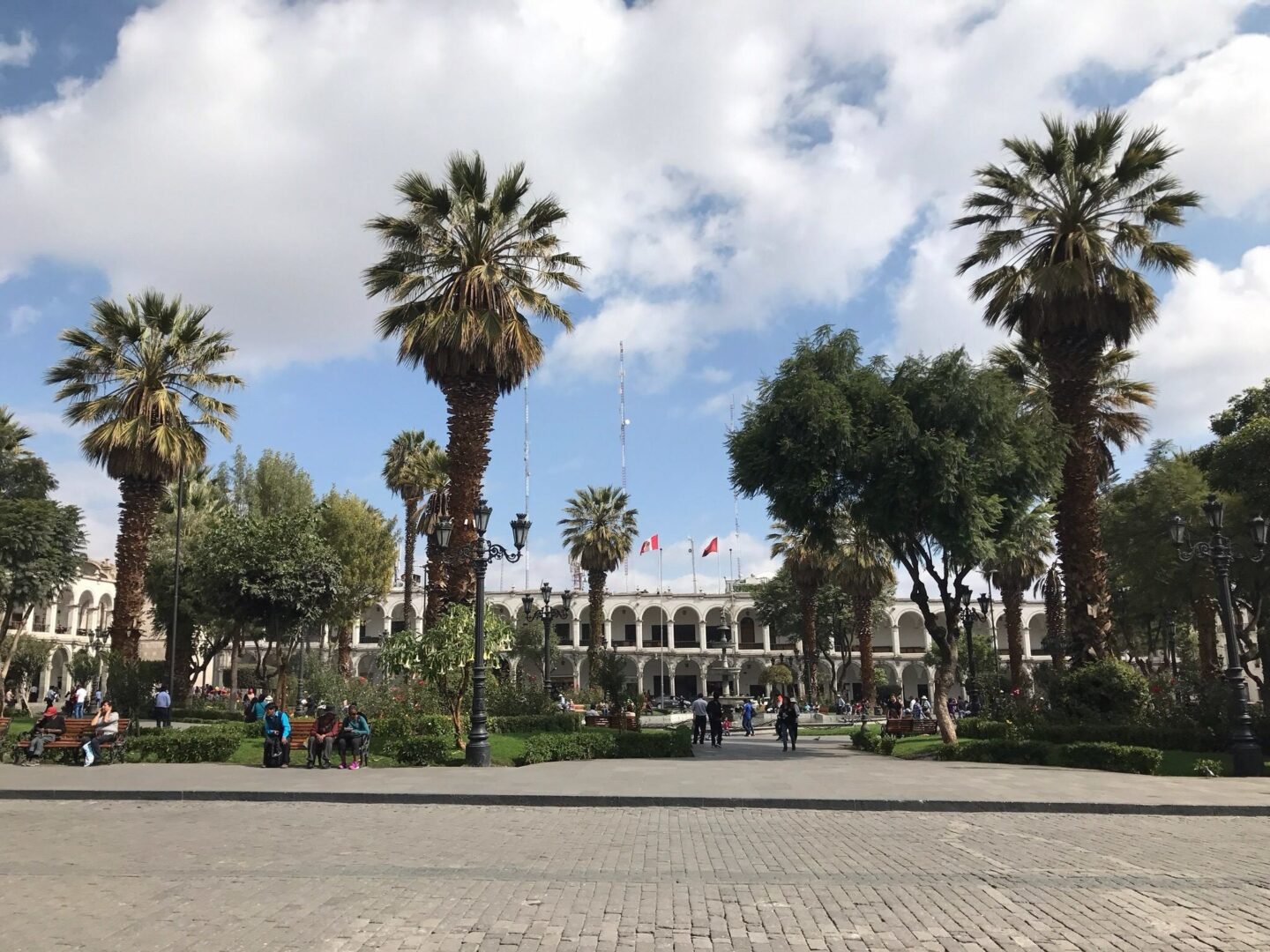
I chose to admire the Cathedral from the outside but you can enter and climb the tower for sweeping views over the city. I had been away from home for a while and found that there were actually a few Indian restaurants in Arequipa, so I decided to indulge. I tried a spot called India Restaurant and it was one of the best meals I had during my time in Peru.
Afterwards, head to the Yanahuara viewpoint by bus, or thirty minute walk if you’re looking to burn off the curry. If you’re lucky enough to have a clear day, you’ll get a fantastic view of the Misti volcano through the stone arches of Yanahuara square. Enjoy an early evening because the next day in your Peru itinerary requires a very early start.
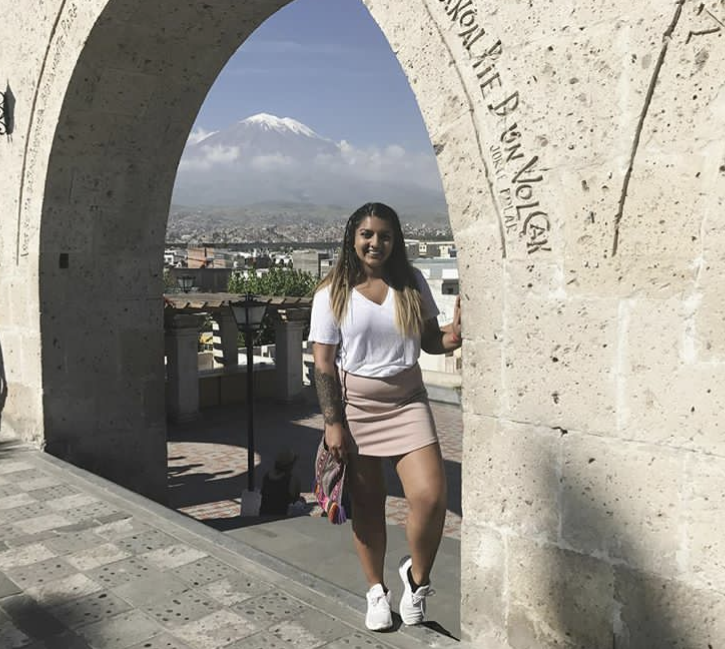
On Day 10, visit the Colca Canyon. This can be booked through Peru Hop at an extra cost or ask your hostel/hotel for recommended tours. It does require a 3:00 AM wake up call though so be prepared for a long day ahead!
Top tip: If you’re a hiker, the Colca Canyon is an incredible place to enjoy trekking, however, you’d need to take 2-3 days to do this. The full day tour is perfect for those who are short on time.
The Colca Canyon is the second deepest canyon in the world – even deeper than the Grand Canyon! You can find over 100 species of birds, including the Andean Condor bird, which can weigh up to 12 kg!
The highest point of the Canyon is Ampato at 6388 meters above sea level. These snow-capped peaks form an impressive backdrop to the Canyon. You should arrive back from your tour at around 5:30pm. Despite having a full day, it’s time to get ready for an overnight bus to Huacachina. Don’t worry, there’s no early start the next day so you can have a good lie in!
Day 12-13: Huacachina
I had never heard of Huacachina before I booked the Peru Hop bus and now it’s somewhere that easily became the highlight on my Peru itinerary! Take it easy and enjoy the slow pace of Huacachina’s dreamy desert oasis. Sip on drinks overlooking the dramatic sand dunes and the glittering lake before an evening of exciting dune buggy rides and sandboarding!
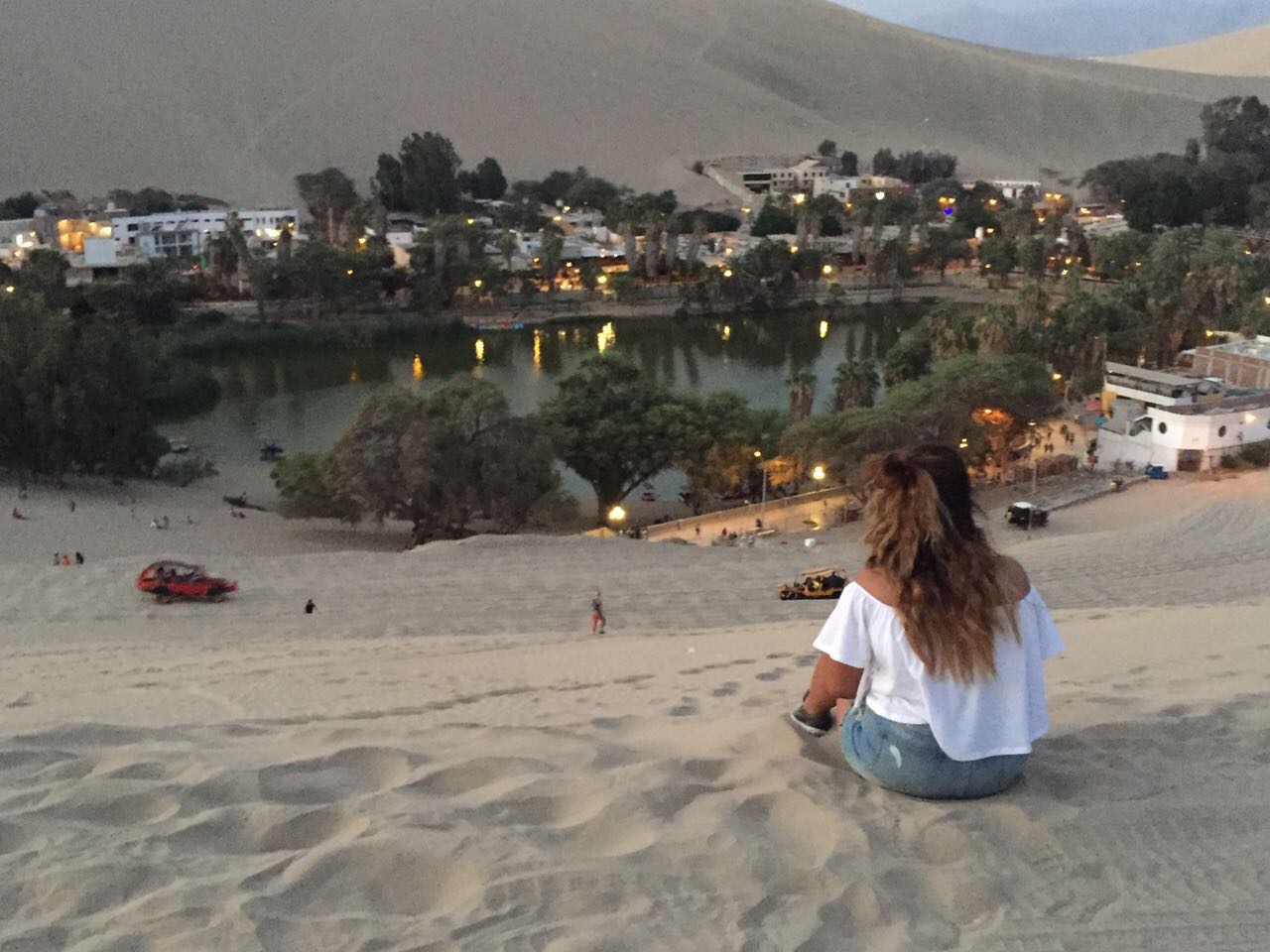
Book on a tour to enjoy the thrill of a ride through the sand dunes. The buggies will take you to the top where you can then sandboard down! Such a fun experience!
On your next day, you can enjoy a free tour to a local pisco vineyard where you can sample the national drink of Peru! It’s a fun morning out and afterwards you’ll make your way to Paracas, where you’ll spend the night.

Day 14: Paracas and the Ballestas Islands
You’ll start early with an included boat tour of the Ballestas Islands, Peru’s mini Galapagos. Catch a glimpse of the wildlife here, from sea lions, penguins, pelicans, and if you’re really lucky, dolphins! The rock formations and natural arches carved by the sea are really fascinating! Enjoy lunch here and explore the local town before boarding a bus to Lima for an evening arrival.

Day 15-16: Lima
The end of your Peru itinerary takes you to the capital city of Lima. This coastal city combines grand plazas, ornate cathedrals and rich heritage within a modern twist. Miraflores is a good place to position yourself thanks to its beautiful oceanfront location, vibrant nightlife, upscale shopping and stunning views along the Costa Verde boardwalk.
Wander around the historic centre, visit the Museum of Gold, walk across the Bridge of Sighs and explore the Lima Cathedral. And don’t forget to try fresh ceviche!